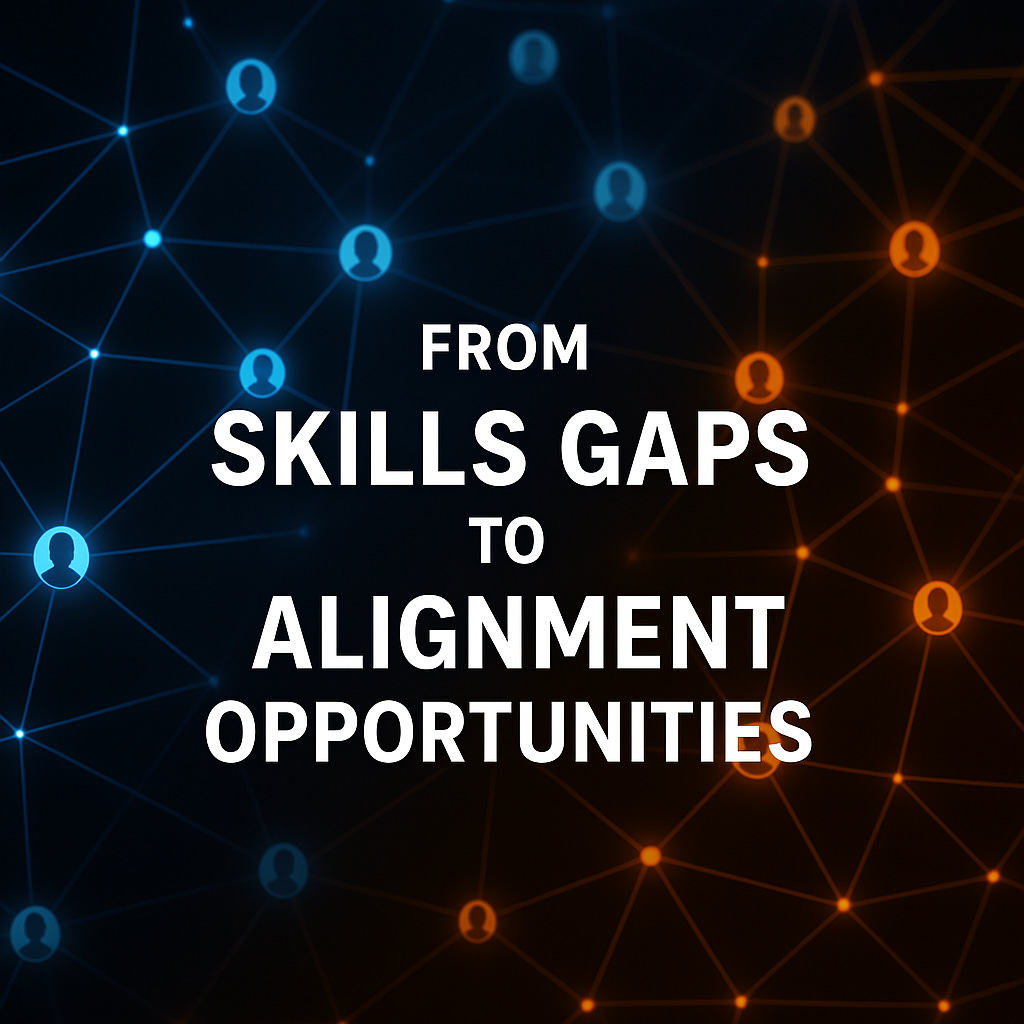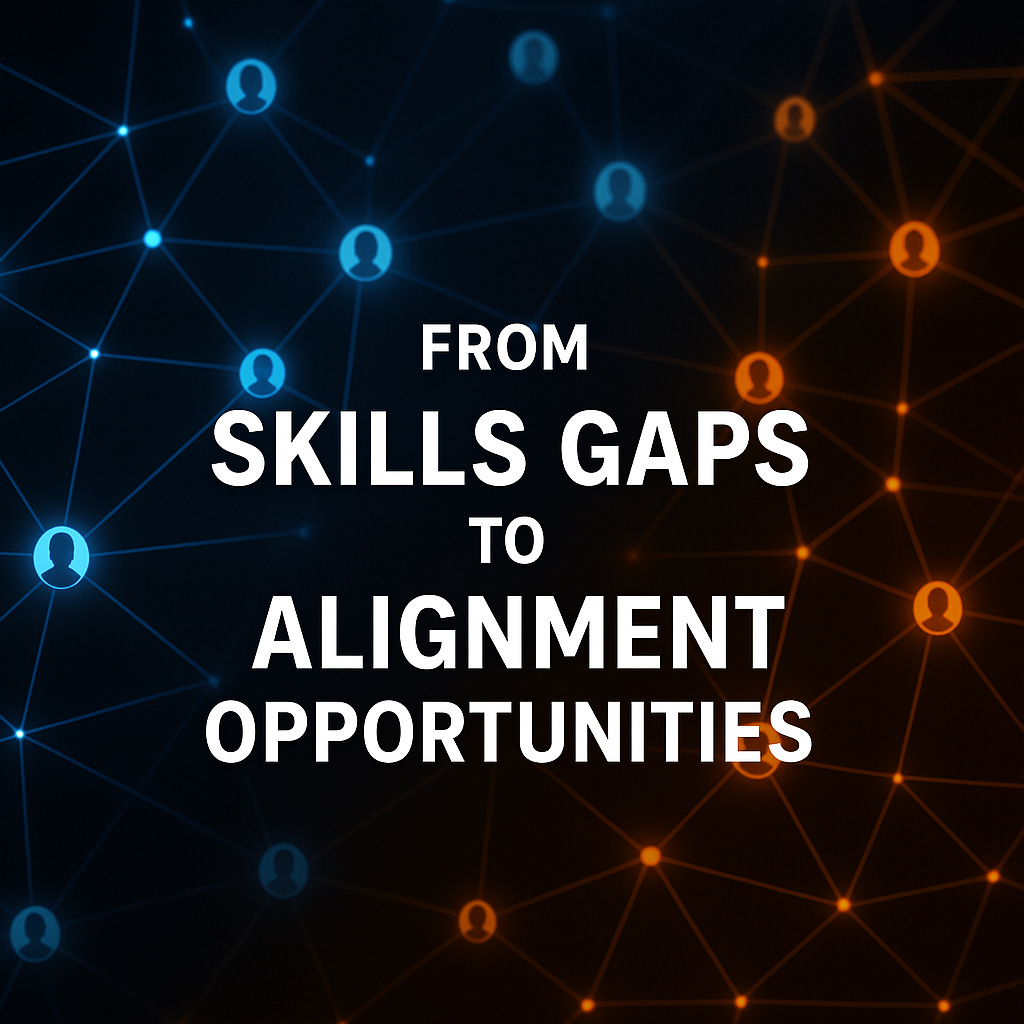We’ll Never Reskill Fast Enough — And We Don’t Need To
What Have We Always Done When Demand Outpaced Supply? And What Can We Do Now Instead?
The Present Moment
🚨 Nearly 47% of U.S. jobs are at risk of automation from AI over the next decade.
And at the same time, 1.3 million AI roles are projected by 2027 — with half likely to go unfilled.
This is a seismic shift. A supply–demand collision unlike anything we’ve seen before.
The Old Reflex
For more than a century, when demand outpaced supply, we pulled the same levers:
🎓 Expand the pipeline — build more degree programs, bootcamps, and credentials.
🔄 Reskill mid-career workers — retraining, certifications, rotations.
That reflex worked “well enough” through the industrial age.
It even carried into software, cybersecurity, and data science.
We measured talent by two proxies:
Skills = what you can do.
Experience = where you’ve done it.
It was never perfect. But it scaled.
The problem is — it won’t scale to this moment.
We’ll never reskill fast enough to keep pace with what AI is reshaping.
A Generational Shift
But here’s where the reflex starts to crack.
The fastest-growing cohort in the workforce - millennials, Gen Z, and the generations rising behind them - were never socialized into “a career for life.”
Instead, they grew up in a world of on-demand consumerism:
Shopping online, not in store.
Streaming instantly, not waiting for albums or broadcasts.
Validation in hours, not years.
Short gratification cycles. Fast feedback loops. That’s the rhythm they know.
So when we hand them the old workforce playbook - “wait years to climb the ladder,” or “your reskill program will pay off eventually” - it doesn’t land.
Reskilling might tick a box, but it doesn’t answer what they’re really asking for:
👉 That the minutes and moments of their worklife feel meaningful.
Not just in the skills they’re applying or learning -
but in the environments where they spend their time:
⚡ How the team operates.
⚡ Whether the dynamics energize or drain them.
⚡ If the culture amplifies their strengths … or erodes them.
The Generational Shift
And here’s the bigger truth: we don’t need to.
Because the rising workforce — millennials, Gen Z, and the generations following — never grew up with “a career for life.”
They were socialized in an on-demand world:
Shopping online, not in store.
Streaming instantly, not waiting for albums or broadcasts.
Validation in hours, not years.
Their rhythm is short gratification cycles, fast feedback loops, instant context shifts.
So when we hand them the old workforce playbook — “wait years to climb the ladder” or “your reskill program will pay off eventually” — it doesn’t land.
Reskilling might tick a box. But it doesn’t answer what they’re really asking:
👉 Will the minutes and moments of my work actually feel meaningful?
Not just in the skills they’re applying or learning —
but in the environments where they spend their time:
⚡ How the team operates.
⚡ Whether the dynamics energize or drain them.
⚡ If the culture amplifies their strengths — or erodes them.
The Opportunity Now
For over a century, those factors were dismissed as intangibles.
Soft. Secondary. Unmeasurable.
But now, AI changes the game.
AI gives us the ability to ingest and track these dynamics consistently and at scale:
Alignment data: how people actually show up in team dynamics.
Motivator data: whether they sustain energy in a given environment.
Interaction data: which conditions amplify — and which diminish — their strengths.
What used to be gut feel can now be measured, modeled, and acted upon.
From Skills Gaps to Alignment Opportunities
So the real shortage isn’t people with skills.
The real shift is our ability to measure and act on alignment.
And that reframes the whole question:
👉 Do we still have a supply-and-demand crisis?
Or do we have an augmentation opportunity — to put people in the right environments, where they’ll thrive, stretch, and grow in real time?
Because here’s what happens when alignment is visible:
Work itself becomes “on-demand.”
People see themselves in the right role, in the right team, at the right time.
And thriving people don’t just deliver today. They learn faster, help one another, take risks, innovate — and stick around.
Closing Thought
We’ll never reskill our way through this shift.
And we don’t need to.
The future isn’t about mass-producing skills.
It’s about alignment.
Putting people in the right environments —
and letting that magic take care of the rest.




